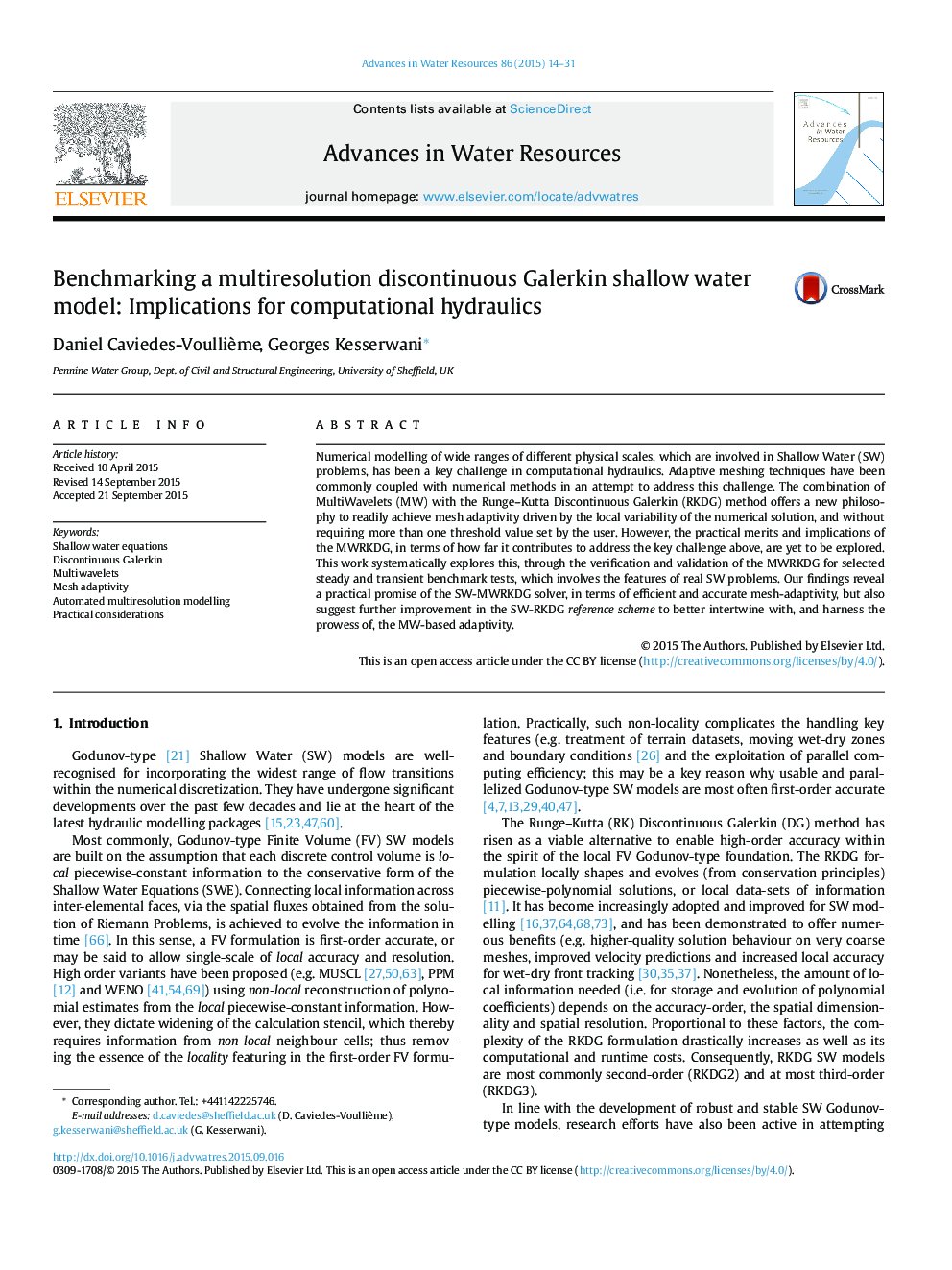| Article ID | Journal | Published Year | Pages | File Type |
|---|---|---|---|---|
| 6380850 | Advances in Water Resources | 2015 | 18 Pages |
Abstract
Numerical modelling of wide ranges of different physical scales, which are involved in Shallow Water (SW) problems, has been a key challenge in computational hydraulics. Adaptive meshing techniques have been commonly coupled with numerical methods in an attempt to address this challenge. The combination of MultiWavelets (MW) with the Runge-Kutta Discontinuous Galerkin (RKDG) method offers a new philosophy to readily achieve mesh adaptivity driven by the local variability of the numerical solution, and without requiring more than one threshold value set by the user. However, the practical merits and implications of the MWRKDG, in terms of how far it contributes to address the key challenge above, are yet to be explored. This work systematically explores this, through the verification and validation of the MWRKDG for selected steady and transient benchmark tests, which involves the features of real SW problems. Our findings reveal a practical promise of the SW-MWRKDG solver, in terms of efficient and accurate mesh-adaptivity, but also suggest further improvement in the SW-RKDG reference scheme to better intertwine with, and harness the prowess of, the MW-based adaptivity.
Keywords
Related Topics
Physical Sciences and Engineering
Earth and Planetary Sciences
Earth-Surface Processes
Authors
Daniel Caviedes-Voullième, Georges Kesserwani,
